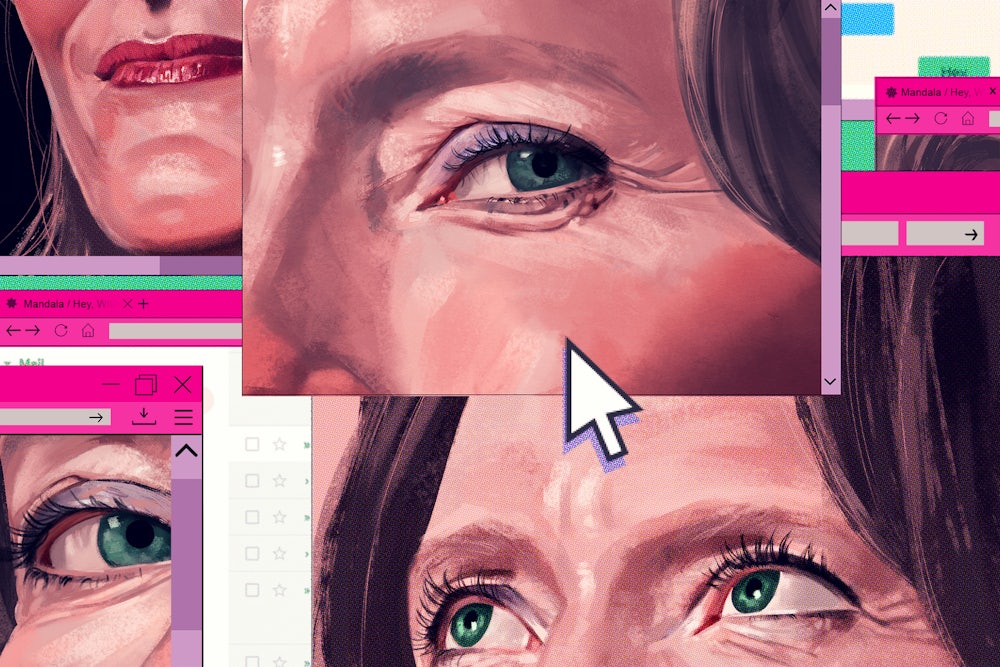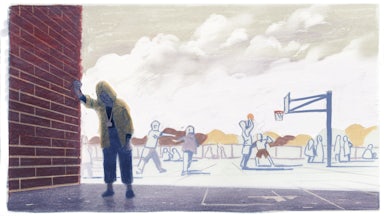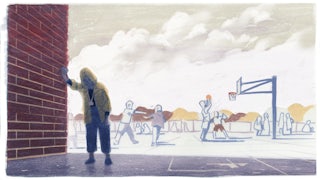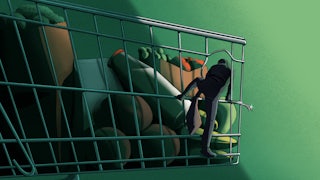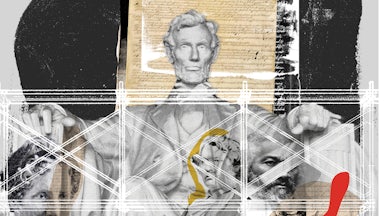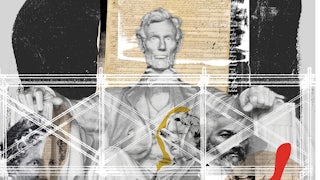A few years ago, I found myself in a stranger’s home when she was not there. I looked into her shower, checked the knobs on her stove, walked the path from the front door to the garage where the washer and dryer were kept. “What do you do?” the landlord asked me. I told him I was a journalist, and he said another writer used to rent this place. Based on various descriptors, I was sure it had to be Jennifer Egan, who had just been teaching at a nearby college. I hadn’t given it much thought until recently, when I was assigned to review The Candy House, her new novel. Had I been in the very rooms where the author conceived these pages I was now tasked with evaluating? It was as if I had been transported into one of Egan’s novels; my humble apartment search now part of a grand plot testifying to the interconnected fabric of human existence. A small, mundane detail, namely that I found the listing online, would have tied it up in a bow, a plot point coming full circle, waiting for a critic to underline or scribble a note in the margins, something about “the intimacy of strangers in the digital age.”
I checked back in with that landlord, and it turns out he was talking about someone else entirely. Such are the disappointments of our age, where so much loses its magic IRL. Perhaps this is why in her new novel Egan chooses to revel in the addictive delights of being online—an experience way more fun that any of us will admit. She achieves some of her world-building through scenes of pure digital realism; in the parlance of that space, Egan reads us for filth. A 50-page chapter, which makes up nearly one-sixth of the novel, is composed entirely of snarky, gossipy emails being shared among a subset of the characters, replete with all the Shakespearean drama and petty pleasures of bcc and fwd. Elsewhere, though, there are jolts of neon futurism. The novel is set in an exaggerated version of our own hyper-connected world, where a new tech company called Mandala has found a way to log human consciousness and upload it to a crowdsourced database, making our memories searchable and shareable. One of Mandala’s many applications is Hey, What Ever Happened To …?™, which cross-references the memories of everyone who has uploaded their consciousness to the server to track down a person’s latest whereabouts. I could not tell if I was supposed to feel terrified by the prospect of this technology or comforted by the fact that I have already grown accustomed to various versions of it.
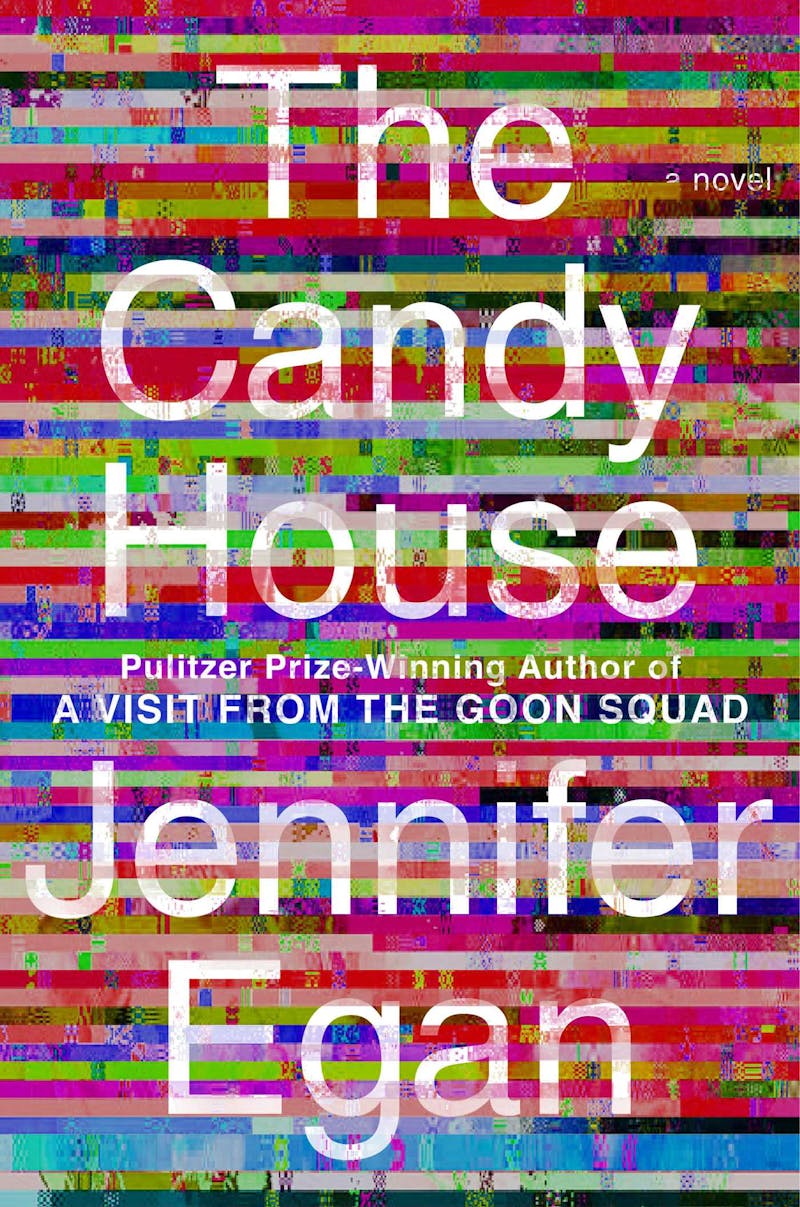
As The Candy House revisits characters Egan has introduced us to before, the novel has been described as a sequel, though the publisher prefers to call it a “sibling.” The book picks up, albeit not straightforwardly, from Egan’s Pulitzer Prize–winning 2011 novel, A Visit From the Goon Squad, a study of the punk rock scene that spanned San Francisco in the 1970s to New York in the 2020s. The two books share a formal playfulness, both featuring intertwined vignettes, various e-documents (famously, an entire chapter of Goon Squad unfolded through PowerPoint slides), and huge leaps back and forth through time. Minor characters from the earlier novel are suddenly protagonists, and vice versa—figures around whom everyone once orbited are now relegated to the role of satellite. Reading The Candy House after A Visit From the Goon Squad is like logging into a different person’s social media account and finding those who were once “Suggested Friends” are now your close ones.
Dense with characters, dizzying with subplots, The Candy House is like a Twitter timeline transposed onto the page, but self-consciously so—a meta novel about the metaverse. By bottling the vitality of the internet and letting it disrupt the flow of narrative, Egan puts on display just how much the internet has changed the way stories unfold in our lives, an exploration she began in Goon Squad. In a world where we know everyone forever, where old flames can be reignited and old wounds reopened with little more than a Facebook “Memories” notification, our narratives have lost any clear discernible end point. We have not only lost the plot; we have lost plot, period. Egan never despairs in this chaos; if anything, she revels in the limitlessness it breathes into life; we are all just one push alert away from our own sequels, second chances, redemption stories. As she re-creates the tantalizing disorder of the internet on the page, Egan displays the capaciousness of the novel as a form, making the case for old media in this era of new.
The Candy House begins in 2010 with tech oracle Bix Bouton going for a late-night walk around Manhattan. Bix, who first appeared in Goon Squad as a computer geek and NYU grad student, is now the founder of Mandala, a mammoth social network. (Some will be tempted to see him as a Black Steve Jobs, though his early vision of the internet, as an alternative locus for Black social life, reminded me also of BlackPlanet, a pre-Facebook social media network founded by Omar Wasow and Benjamin Sun in the late 1990s.) Eventually, Bix ambles his way up to the campus of Columbia University, where he sees a flyer for a discussion group: “Let’s Talk! Asking Big Questions Across Disciplines in Plain Language.” Feeling emptied of ideas and unclear about the next direction his company should take, Bix decides to sneak in, pretending to be a graduate student (essentially his younger self). While there, he meets a scientist who mentions that her lab has found a way to “externalize animal consciousness.” There are, however, ethical concerns, she tells him. She worries they might be opening “Pandora’s Box.” For a tech entrepreneur, those two words are like catnip.
From here, the novel spins out, subsequent chapters focusing on the extended family and web of acquaintances of those present at the “Let’s Talk!” gathering, their lives affected to varying degrees by Mandala’s newest applications. Ted Hollander, an art historian who appeared, alongside his kleptomaniac niece, Sasha, in A Visit From the Goon Squad, is one of the other attendees. In this novel, we spend more time with his adult children from his first marriage, including Alfred, an erstwhile filmmaker who is so starved for authenticity in a world of mediated social media presences that he engages in public screaming and gags like putting a paper bag over his head.
The Candy House does not dwell on social media or its potentially ill effects long enough to produce anything like ham-fisted critique. Even the concerns about data collection are tinged with marvel that people would give over so much information about themselves simply to listen to a song. The internet-ness of the novel manifests more subtly. Across these chapters, we learn intimate details about new characters with a disarming swiftness—much as we learn about people online. At one point, Alfred’s girlfriend, Kristen, travels to Illinois to meet the rest of his family; within minutes, she observes a family argument from which she learns that Alfred’s mother slept with the best friend of her other son. Right then, Alfred abruptly decides he will track down this best friend, a man named Jack Stevens. They quickly locate Jack’s address through a search engine on Alfred’s phone and drive to Jack’s house. Right after they go inside, Jack starts spilling sensitive financial and personal information (collection agencies are “on his ass,” his ex was “unfaithful”). It is jarring to encounter characters this way in fiction, so abruptly and forcefully, and yet on the internet, this is how we become acquainted with one another—reading threads about taxes and blood tests written by strangers. Everything I have learned about x I have learned against my will, as we say. Egan re-creates that sensation of information overload in The Candy House, and by placing it in the realm of fiction makes it newly strange, pushing us to consider its implications: What does it even mean to know someone anymore?
One of the ways Egan re-creates the sensorium of the internet is through huge, almost comical time jumps that reflect the bizarre processes of reconnection that digital life facilitates. Online, people from our distant past are as easy to reach as our nearest friends. In A Visit From the Goon Squad, a publicist named Dolly Peale is forced to take work doing PR for a genocidal dictator; she arranges for an actress named Kitty Jackson to be photographed with him, to drum up good press. Dolly brings her daughter Lulu along on the trip. Now, 26 years later, in The Candy House, Lulu sends Kitty an email, asking for a favor. “You may remember me,” she states, in a message that reads laughably familiar for those of us who have now had Facebook for half of our adult lives. The moment recalls a scene from Goon Squad in which Sasha’s ’90s-era college friends pronounce, “Let’s remember this day, even when we don’t know each other anymore,” to which Bix, keenly aware of the revolution to come, scoffs, “Oh, we’ll know each other forever,” adding, “The days of losing touch are almost gone.” In this way, The Candy House’s own status as a sequel itself feels not unlike the out-of-the-blue follow-ups that Bix presaged—a nod to the increasing endlessness of our entanglements.
To the extent that the novel has a core tension, it is between Mandala and a secretive nonprofit called Mondrian. Mondrian is part of a movement of “data defiers” seeking to elude Mandala’s systems with the aid of “proxies,” online impersonators whose presence allows the real person to disappear—that is, to live offline. Yet connection is hard to separate from disconnection, and maybe even depends on it: The very algorithms that inspired Mandala’s social network, we learn, were based on the work of an anthropologist (Miranda from Goon Squad) who studied the “affinity patterns” of a remote Brazilian tribe who were cut off from all technology. Throughout The Candy House, Egan complicates the binaries of technophobia and philia to show that much of what we want from the engineers of the future is actually a way to stop time, to let us live longer and more richly in the present.
Perhaps because of its very omnipresence, Mandala’s technology feels oddly absent in the novel at times, more ambient than sinister. The worries that occupy Egan’s characters are instead timeless ones: An aging music producer fears he was a terrible father, an awkward preteen anxiously tries to fit in with a cooler crowd, a soldier struggles with PTSD. The algorithmization of daily life seems to have merely updated the language people use to express age-old desires. Sasha’s son is one of the novel’s “counters”—someone whose job is to explain human decisions through mathematical reasoning. He tries to convince his co-worker that cheating on her boyfriend and sleeping with him is only logical: “you’ll be more trustworthy and committed to Marc from that point on, because when you see my muscles through my T-shirt and feel attracted to me, you’ll think, I’ve already had sex with Lincoln and it wasn’t that great, so who cares about those muscles?”
Ultimately, The Candy House suggests that the internet is just the newest form by which we access our favorite content: one another. There are and have always been a multitude of ways to do this, likewise at our very fingertips. At one point, two characters are trying a new piece of wearable technology called Skin-to-Skin™, a tool that “let people access each other’s consciousness directly if their flesh was touching.” The ad for the product promises “now you could share another person’s suffering and confusion and joy immediately and wordlessly.” I scribbled in the margin: This is what novels do!
